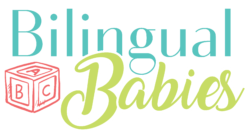Originally, the languages someone speaks have been viewed as separate systems. Especially in education, they are very often still regarded and treated as separate entities. For example, teachers claim they are only teaching in the target language. However, over the past 20 years that view has gradually been changing and an approach called “translanguaging” has been gaining ground.
What is translanguaging?
 In 1994 a Welsh doctoral student named Cen Williams published his dissertation on Welsh-English bilingual pedagogy in Wales. He suggested that using both languages in the classroom—Welsh and English—would help maximize the students’ and the teacher’s linguistic resources in the process of knowledge construction. In other words, it would help students learn more and better when they are allowed to use and express themselves drawing upon their entire language repertoire. In his 2001 book Foundations of Bilingual Education and Bilingualism Colin Baker (2001) translated Williams’ term “trawsieithu” from Welsh into English and called it “translanguaging”.
In 1994 a Welsh doctoral student named Cen Williams published his dissertation on Welsh-English bilingual pedagogy in Wales. He suggested that using both languages in the classroom—Welsh and English—would help maximize the students’ and the teacher’s linguistic resources in the process of knowledge construction. In other words, it would help students learn more and better when they are allowed to use and express themselves drawing upon their entire language repertoire. In his 2001 book Foundations of Bilingual Education and Bilingualism Colin Baker (2001) translated Williams’ term “trawsieithu” from Welsh into English and called it “translanguaging”.
Translanguaging versus codeswitching
A common question is: what’s the difference between translanguaging and codeswitching? In a nutshell, the idea of translanguaging goes beyond codeswitching. Codeswitching means that a speaker alternates between languages within “a communicative episode” such as a sentence or a conversation. Codeswitching also follows specific rules. By contrast, translanguaging is a bit broader. It views the languages a person speaks not as separate systems between which you switch, but as one linguistic repertoire. Translanguaging is rooted in the idea that students can and should use their entire linguistic repertoire for meaning making. Hence, in a classroom, students can use ALL language resources they have, including words and grammatical structures from multiple languages, body language, facial expressions, and semiotics. In that sense, codeswitching can be seen as part of translanguaging.
What’s new about translanguaging?
The new aspect about translanguaging: it is okay to use all of your language resources! The idea of using one’s entire linguistic repertoire and that it is considered positive to do so is relatively new. Traditionally, the monolingual approach—using only the target language in the classroom—was regarded as the gold standard. So teachers used to keep languages separate as much as possible. However, that thinking has been changing over the past decades–a movement spearheaded by prominent researchers in bilingualism. Professor Ofelia García, for example, is a strong defender of allowing bilingual students in school to use their entire language repertoire through translanguaging. She explains the novelty about translanguaging as a new way of thinking and conceptualizing language use:
In recent years, the idea of allowing children to translanguage is gaining ground and even experts in language testing are experimenting with implementing translanguaging into tests and assessments. Alexis Lopez and his research team in the United States have investigated ways of including translanguaging into Math assessments. They argued that “translanguaging offers newly arrived emergent bilingual students [those that just moved to the United States] the opportunity to demonstrate what they know and can do even if their English language and literacy skills are not fully developed” (Lopez, Turkan & Guzman-Orth, 2017).
Translanguaging also conveys a message…
Overall, translanguaging advocates for opportunity. Especially for children who are developing their second language translanguaging is an opportunity to show what they can do and what they know. Additionally, it coneys to them that all of their languages and communicative abilities are valuable and valued resources.
Further reading:
- García, O., & Kleyn, T. (2016). Translanguaging with multilingual students: Learning from classroom moments. Routledge, New York, NY.
- Garrity, S., Aquino-Sterling, C., Day, A. (2015). Translanguaging in an infant classroom: Using multiple languages to make meaning. International multilingual research journal, 9(3), 177-196.
- Lewis, Jones, Baker, C. (2012). Translanguaging: origins and development from school to street and beyond. Educational Research and Evaluation, 18(7). 641-654.
- Lopez, A., Turkan, S., & Guzman-Orth, D. (2017). Conceptualizing the Use of Translanguaging in Initial Content Assessments for Newly Arrived Emergent Bilingual Students. (Research Report No. RR-17-07). Princeton, NJ: Educational Testing Service.

